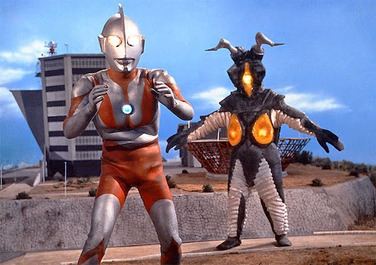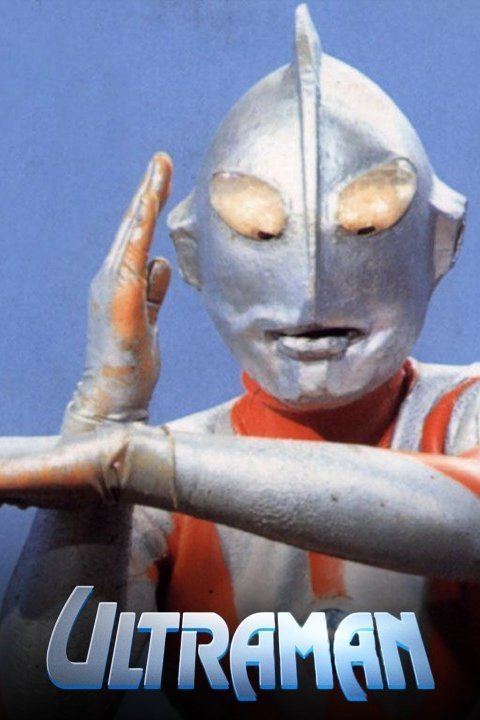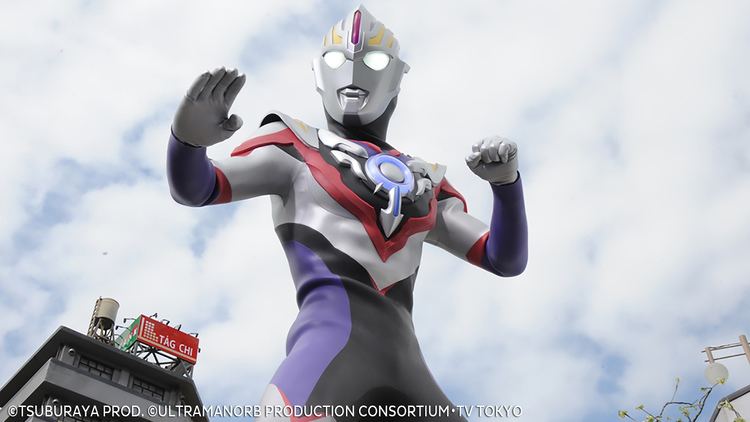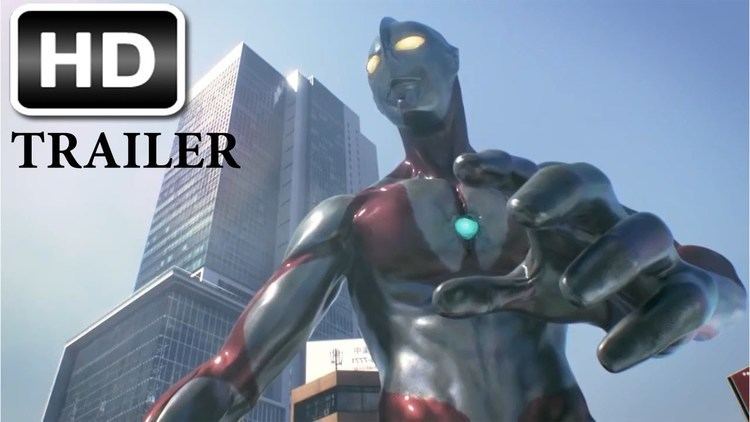9 /10 2 Votes
8/10 TV Composer(s) Kunio Miyauchi Final episode date 9 April 1967 | 7.9/10 IMDb Created by Eiji Tsuburaya First episode date 17 July 1966 | |||||||||||||||||||||||||||||||||
 | ||||||||||||||||||||||||||||||||||
Genre TokusatsuKaijuSuperheroScience fictionActionAdventure Written by Tetsuo KinjōMasahiro YamadaMamoru SasakiShinichi Sekizawa Starring Susumu KurobeAkiji KobayashiHiroko SakuraiSandayū DokumamushiMasanari NiheiBin "Satoshi" Furuya Opening theme "Song of Ultraman" (ウルトラマンの歌, Urutoraman no Uta) by the Misuzu Children's Choir Characters Shin Hayata, Akiko Fuji, Mitsuhiro Ide, Daisuke Arashi Cast Susumu Kurobe, Hiroko Sakurai, Bin Furuya, Akiji Kobayashi, Masanari Nihei Similar Ultraman Taro, Ultra Seven, Ultraman Ace | ||||||||||||||||||||||||||||||||||
Ultraman and ultraseven japanese tv series on dvd review
Ultraman (ウルトラマン, Urutoraman) is a Japanese tokusatsu television series that first aired in 1966. Ultraman is a follow-up to the television series Ultra Q, though not technically a sequel or spin-off. The show was produced by Tsuburaya Productions, and was broadcast on Tokyo Broadcasting System (TBS) from July 17, 1966 to April 9, 1967, with a total of 39 episodes (40, counting the pre-premiere special that aired on July 10, 1966).
Contents
- Ultraman and ultraseven japanese tv series on dvd review
- Ultraman original japanese superhero tv show review w carey martell
- Series background
- Heroes and monsters
- Story
- Science Patrol
- Zoffy
- Episodes
- Theme song
- Home media
- Adaptations
- Malaysian book ban
- References

Although Ultraman is the first series to feature an Ultra-Crusader, it is actually the second show in the Ultra Series. Ultra Q was the first. In fact, Ultraman opens with the Ultra Q logo exploding into the Ultraman logo. Ultraman, and its titular hero, became a major pop culture phenomenon in Japan, spawning dozens of sequels, spin-offs, imitators, parodies and remakes.

Ultraman original japanese superhero tv show review w carey martell
Series background
Ultraman's central characters were created by Eiji Tsuburaya from Tsuburaya Productions, a pioneer in special effects who was responsible for bringing Godzilla to life in 1954. The show's predecessor was a series called Ultra Q, a black-and-white 28-episode series very much like the original Outer Limits.
The Ultraman project had the following working titles/plots:


Both Bemlar and Redman were designed by Toru Narita, who also came up with the final design for Ultraman based on his Redman design, now resembling a less-scary Buck Rogers-style alien being, mixed with a bit of the iconic "Roswell Alien." The characteristic "Color Timer," more familiar to American audiences as the "warning light" on Ultraman's chest, was added at the eleventh hour.
The first series begins when Science Special Search Party (科学特別捜査隊, Kagaku Tokubetsu Sōsa-tai) member Shin Hayata is flying his plane and a red sphere of light crashes into his Mini-VTOL. The sphere turns out to be the transport (Travel Sphere) for a giant red-and-silver being who calls himself Ultraman. Feeling remorse for having killed the human, he merges his essence with Hayata to save him. In return, Hayata serves as the human host for this being, and whenever danger threatens, and the resources of the Science Special Search Party are not enough to counter it, he raises and activates a power-object and artifact called a "beta capsule" and transforms to Ultraman to save the day.
Heroes and monsters
The Ultraman series used various monster costumes, known as kaiju in Japan, prior to other series such as Kamen Rider and Super Sentai. The principals were played by famous monster suit actor Haruo Nakajima, who performed as the original Godzilla. Another Toho actor, Satoshi "Bin" Furuya, was sought out for the role of Ultraman, because of his tall stature and perfect proportions. In the image from episode 11, "The Rascal from Outer Space" (right), we see an example confrontation, with Ultraman and the monster Gyango squaring off in a plaza in front of a hi-rise complex which will soon be trampled, and dwarfing the tree line.
Nakajima had an outdoor-sports and martial-arts background, and they decided that Ultraman would not seem alien if he was using earth-bound martial arts techniques. So Ultraman's fighting style was a mixture of grappling, Greco-Roman wrestling, and some Japanese martial arts, which evolved during the course of the series.
Often costumes of famous monsters like Godzilla (as Jirass/Keyra in "The Mysterious Dinosaur Island") and Baragon would be recycled and altered, sometimes with nothing more than spray paint and often while the actor was still inside. Nakajima quipped once that the staggering gait of some of the monsters he portrayed was due less to his acting than to the fumes he had to endure.
Some of the quadrupedal monster costumes could not be shown fully as his legs dragging on the ground would have been exposed, a necessary allowance to maintain balance in the often cumbersome outfits. Also, the expense of repairing the scale cities and landscapes used for battle scenes required economy of movement and meticulous planning.
Not all monsters resembled Godzilla or a dinosaur. Others included giant insects (The Blue Stone of Vallarge) ; carnivorous plants (The Secret of Miloganda), mutated and giant humans or humanoids (My Home is the Earth), aliens, some with a very inhuman appearance (Blast the Invaders), a monster that looks like a narwhal with legs (The Undersea Science Center), a yeti (Phantom of the Snow Mountains), and a monster that looks like a cross between a meteorite and a sea anemone (Passport to Infinity).
Story
The storyline begins in the near future, as referenced from the mid-1960s. In episode 23, "My Home Is Earth," it is definitively established that the series takes place in the early 1990s with a plaque, shown at the end of the episode, and dated 1993. However, this was later retconned by the introduction of The Return of Ultraman, which takes place in 1971. Sinister aliens and giant monsters constantly threaten civilization during this period. The only Earth organization equipped to handle these disasters and menaces is the Science Special Search Party, or SSSP, a special worldwide police force equipped with high-tech weapons and vehicles as well as extensive scientific and engineering facilities; this organization is called the Science Patrol, or the United Nations Scientific Investigation Agency, in the English-dubbed version syndicated in the United States.
The branch of the Science Special Search Party that is focused on in the series is located in Tokyo, Japan. Led by Captain "Cap" Toshio Muramatsu (shortened to "Captain Mura" in the dubbed English-language version), the Science Special Search Party is always ready to protect the Earth from rampaging monsters. But sometimes it finds itself outclassed.
One day, Shin Hayata, the Patrol's most capable member, was patrolling near a lake when he witnessed a space monster named Bemular, who had come to Earth in an orb of blue energy, being chased by an orb of red energy. Hayata also gave chase to Bemular, but the orb of red energy collided with Hayata's ship, causing both to crash land and killing Hayata in the process. Ultraman, who was generating the red orb, felt guilty for killing the capable scientist/soldier, and to make up for the terrible thing he had done, chose to revive Hayata in exchange for him becoming his host, who would contain him while he was on Earth.
From that day forward, Ultraman staunchly defended Earth against aliens and monsters, with Hayata and the SSSP assisting him.
After Ultraman appeared, he would fight the threat until it was defeated, and he would then fly away to revert to his host. (This was shown, twice, by Ultraman firing a ring of energy from his hands that would fly to a safe location, and then energy from it would materialize Hayata even as Ultraman himself faded away at the same time.) Ultraman's victory was never assured, however, as Ultraman's powers and, indeed, his very life force, came from rapidly depleted solar energy, which was heavily reduced by Earth's filtering atmosphere.
When Ultraman first appears, his "color timer," or "warning light," is always a rich cyan color. As time goes on, the color timer turns solid red, and then starts to blink, giving off a warning chime as it does so. When Ultraman runs out of energy, the color timer goes out, and turns black. Ultraman's color timer is linked directly to his heart, and damaging it will cause mortal injury or serious pain to Ultraman.
In the series finale, a race of Aliens named the Zettonians, and their vanguard Kaiju, Zetton, attack. Ultraman appears to fight Zetton, but before Zetton is defeated, he mortally wounds Ultraman with a weapon he had not expected (one directly targeting his color timer/warning light) that damages his color timer/warning light, causing him to lose almost all his energy instantly.
When Zoffy, Ultraman's superior, comes to retrieve the fallen hero, Ultraman pleads for Hayata's life and offers his life completely, so that Hayata may live as a normal man. Zoffy then says he has brought two life-forces and that he will give one to Hayata. He then separates them, giving Hayata new life, but Hayata seems to have no memory between the time he first collides with Ultraman's ship (in the first episode), and he is shown standing outside the Science Special Search Party Headquarters, holding the beta capsule but apparently not knowing what it is or what it does. Fuji comes to his aid, as Hayata watches Zoffy take Ultraman home. This is a rather different finish to the series than stated in the English dub, which states both that Ultraman will return and that Hayata retains not only his beta capsule but also, apparently, his full memories of all his experiences as he awaits Ultraman's return. The latter ending appears to have been adopted by Tsuburaya as the definitive ending, as Hayata reappears several times throughout the series as Ultraman's host in times of need.
Science Patrol
Zoffy
Zoffy (ゾフィー, Zofī) is a Space Ranger (宇宙警備隊員, Uchū Keibitai-in) whose first appearance was in episode 39, the series' finale. In later media such as Ultraman Ace, he received the promotion to Space Guard Captain (宇宙警備隊隊長, Uchū Keibitai taichō). His badge of honors are six pairs of Star Mark (スターマーク, Sutā Māku) medals on his chest and three pairs of Ultra Breasters (ウルトラブレスター, Urutora Buresutā) medals on his shoulders.
Zoffy was sent to retrieve Ultraman after his defeat by Zetton, but the fallen Ultra Warrior refused, being that his life was connected to Shin Hayata, and their separation would result in the man's death. Seeing how responsible Ultraman felt towards the young man, Zoffy revealed that he was carrying two life forces with him and donated one to Hayata, before separating them, giving the young man another chance to live at the expense of his experiences with Ultraman. The two then left Earth for their home world in Nebula M78. Alongside Ultraman, Zoffy would appear in later works of the Ultra Series and usually played a pivotal role, such as in Ultraman Mebius (indirectly responsible for the formation of Crew GUYS) and Mega Monster Battle: Ultra Galaxy (a long time comrade of Father and Mother of Ultra, as well as Belial).
Although never shown in Ultraman, Zoffy's signature attack is the M87 Ray (M87光線, Emu Hachi-jū Nana Kōsen), which is performed by having his right arm extended front and his left arm fold to his Color Timer. This finisher launches a beam of white energy, and is regarded as one of the strongest attacks in the Ultra Series canon. A popular misconception by fans is that the attack's name is M78 Ray, with the numbers in the same order as the nebula that houses the Ultra Warriors' home world despite that both of them are entirely unrelated. An alternate formation of this attack is called the M87 Ray B (M87光線B, Emu Hachi-jū Nana Kōsen Bī), which was shown in episode 34 of Ultraman Taro against Alien Temperor.
Zoffy was originally voiced by Hikaru Urano (浦野光, Urano Hikaru), who was the show's narrator from episodes 20-39, as well as the 1996 epilogue stock-footage film Revive! Ultraman. Hikaru's only reprisal of his role as Zoffy was the 1984 film Ultraman Zoffy: Ultra Warriors vs. the Giant Monster Army, 17 years after the original Ultraman ended.
Episodes
- Ultra Operation No. 1 (Alternate DVD Title: Ultra Operation Number One) (ウルトラ作戦第一号, Urutora Sakusen Dai Ichigō)
- Blast the Invaders (Alternate DVD Title: Shoot the Invader/Defeat the Invaders) (侵略者を撃て, Shinryakusha o Ute)
- Science Special Search Party, Move Out (Alternate DVD Title: Charge Forth, Science Special Search Party/Sally Forth, Science Special Search Party!) (科特隊出撃せよ, Katokutai Shutugeki seyo)
- Detonation: Five Seconds (Alternate DVD Title: Five Seconds Before The Explosion/5 Seconds Before the Big Explosion!) (大爆発五秒前, Dai Bakuhatsu Gobyō Mae)
- Secret of the Miloganda (Alternate DVD Title: Treasure of the Miloganda/Secret of Miroganda) (ミロガンダの秘密, Miroganda no Himitsu)
- The Coast Guard Command (Alternate DVD Title: Coast Guard Orders) (沿岸警備命令, Engan Keibi Meirei)
- The Blue Stone of Vallarge (Alternate DVD Title: The Blue Stone of Baraj/The Blue Stone of Baradhi) (バラージの青い石, Barāji no Aoi Ishi)
- The Wild Monster Zone (Alternate DVD Title: The Lawless Monster Zone/Monster Lawless Zone) (怪獣無法地帯, Kaijū Muhō Chitai)
- Operation: Lightning Strike (Alternate DVD Title: Operation Light Speed/Operation Electric Stone Fire) (電光石火作戦, Denkōsekka Sakusen)
- The Mysterious Dinosaur Base (Alternate DVD Title: Mysterious Monster Base) (謎の恐竜基地, Nazo no Kyōryū Kichi)
- The Rascal from Outer Space (Alternate DVD Title: The Ruffian From Outer Space/The Rambunctious One From Space) (宇宙から来た暴れん坊, Uchū kara Kita Abarenbō)
- Cry of the Mummy (Alternate DVD Title: The Cries of the Mummy) (ミイラの叫び, Miira no Sakebi)
- Oil S.O.S. (Alternate DVD Title: none) (オイルSOS, Oiru Esu Ō Esu)
- The Pearl Defense Directive (Alternate DVD Title: The Pearl Oyster Protection Directive/Pearl Oyster Defense Order) (真珠貝防衛指令, Shinjugai Bōei Shirei)
- Terror of the Cosmic Rays (Alternate DVD Title: The Space Ray of Terror) (恐怖の宇宙線, Kyōfu no Uchūsen)
- Science Special Search Party Into Space (Alternate DVD Title: The Science Special Search Party in Outer Space/Science Special Search Party to Space) (科特隊宇宙へ, Katokutai Uchū e)
- Passport to Infinity (無限へのパスポート, Mugen e no Pasupōto)
- The Brother from Another World (Alternate DVD Title: The Brother From Another Planet) (遊星から来た兄弟, Yūsei kara Kita Kyōdai)
- Demons Rise Again (Alternate DVD Title: The Demons Once More) (悪魔はふたたび, Akuma wa Futatabi)
- Terror on Route 87 (恐怖のルート87, Kyōfu no Rūto Hachijūnana)
- Breach the Wall of Smoke (Alternate DVD Title: Break Through The Smoke) (噴煙突破せよ, Fun'en Toppa seyo)
- Sabotage Terrene (Alternate DVD Title: The Underground Destruction Work) (地上破壊工作, Chijō Hakai Kōsaku)
- My Home is the Earth (故郷は地球, Kokyō wa Chikyū)
- The Undersea Science Center (海底科学基地, Kaitei Kagaku Kichi)
- Typhon, the Strange Comet (Alternate DVD Title: The Dreaded Comet Tsuiphon/The Dreaded Comet Twenty-Four) (怪彗星ツイフォン, Kai Susei Tsuifon)
- The Prince of Monsters: Part 1 (Alternate DVD Title: His Majesty Monster, Part 1/The Monster Prince, Beginning) (怪獣殿下 前篇, Kaijū Denka Zenpen)
- The Prince of Monsters: Part 2 (Alternate DVD Title: His Majesty Monster, Part 2/The Monster Prince, Conclusion) (怪獣殿下 後篇, Kaijū Denka Kōhen)
- Human Specimens 5 & 6 (人間標本5・6, Ningen Hyōhon Go Roku)
- The Challenge into Subterra (Alternate DVD Title: Challenge To The Underground) (地底への挑戦, Chitei e no Chōsen)
- Phantom of the Snow Mountains (Alternate DVD Title: The Snowy Mountain of Illusion/The Phantom Snow Mountain) (まぼろしの雪山, Maboroshi no Yukiyama)
- Who Goes There? (Alternate DVD Title: Who Has Come?/Who Has Arrived?) (来たのは誰だ, Kita no wa Dare da)
- The Endless Counterattack (果てしなき逆襲, Hateshinaki Gyakushū)
- The Forbidden Words (Alternate DVD Title: The Forbidden World) (禁じられた言葉, Kinjirareta Kotoba)
- A Gift from the Sky (Alternate DVD Title: Present From The Sky) (空の贈り物, Sora no Okurimono)
- The Monster Graveyard (怪獣墓場, Kaijū Hakaba)
- Arashi, Don't Shoot! (Alternate DVD Title: Don't Shoot! Arashi) (射つな! アラシ, Utsuna! Arashi)
- The Littlest Hero (小さな英雄, Chiisana Eiyū)
- The Spaceship Rescue Command (Alternate DVD Title: Spaceship Rescue Orders) (宇宙船救助命令, Uchūsen Kyūjo Meirei)
- Farewell,Ultraman (さらばウルトラマン, Saraba Urutoraman)
Theme song
An English version performed by The Serendipity Singers was used for the show's US release.
Home media
In 2006, BCI/Eclipse officially released Ultraman on DVD under license from then rightsholder Chaiyo Productions. These releases featured the original Japanese soundtrack and the English dub. When Navarre folded BCI/Eclipse in December 2008, the series was shuffled over to Navarre's other home video label, Mill Creek Entertainment. In June 2009, Mill Creek re-released the complete series set on September 29, 2009, in a 4-disc set with the same special features. In Japan, there have been numerous releases in numerous home video formats over the last 25 years (from VHS to DVD) on several labels, including Bandai's various home video divisions, including Bandai Visual.
On April 2013, Tsuburaya held a press conference announcing the new Ultra Series show and character, Ultraman Ginga, where they also announced that the original 1966 show will be given an HD remaster treatment in Japan. On July 2013, Tsuburaya released an HD transfer of Ultraman on Blu-ray titled, Ultraman HD Remaster 2.0, to commemorate the 50th anniversary of Tsuburaya Productions. Tsuburaya released the series on three separate box sets, each containing 13 episodes. The first box set was released on July 10, 2013, the second on October 25, 2013 and the final on January 29, 2014.
Adaptations
Harvey Comics Entertainment published two short comic book series based on Ultraman in 1993 and 1994.
Bandai published the video game PD Ultraman Battle Collection 64 for the Nintendo 64 in 1997.
In 2011, a manga adaptation simply titled ULTRAMAN began serialization in Shogakukan's Monthly Hero's magazine. It serves as a sequel to the television series. It was released on August 18, 2015 in North America by Viz Media, having received the rights earlier in February 18, 2015.
Malaysian book ban
On March 6, 2014, the Malaysian Ministry of Home Affairs announced that it had banned the publication of an Ultraman comic book Ultraman: The Ultra Power "due to contents that were detrimental to public order". Social media users later noticed that a page in the book described the character of Ultraman King (from the film Mega Monster Battle: Ultra Galaxy) as a god, which in the Malaysian pidgin language Bahasa Rojak is the Arabic word "Allah". The Home Ministry later confirmed that the use of "Allah" was indeed the reason for the ban, claiming that the comparison may "confuse Muslim children and damage their faith". This highlighted the larger ban to prevent non-Muslims in Malaysia from using the word "Allah" despite its common usage in the Malaysian pidgin to refer to any "God", as well as a suit from the Catholic Church of Malaysia over its usage.
